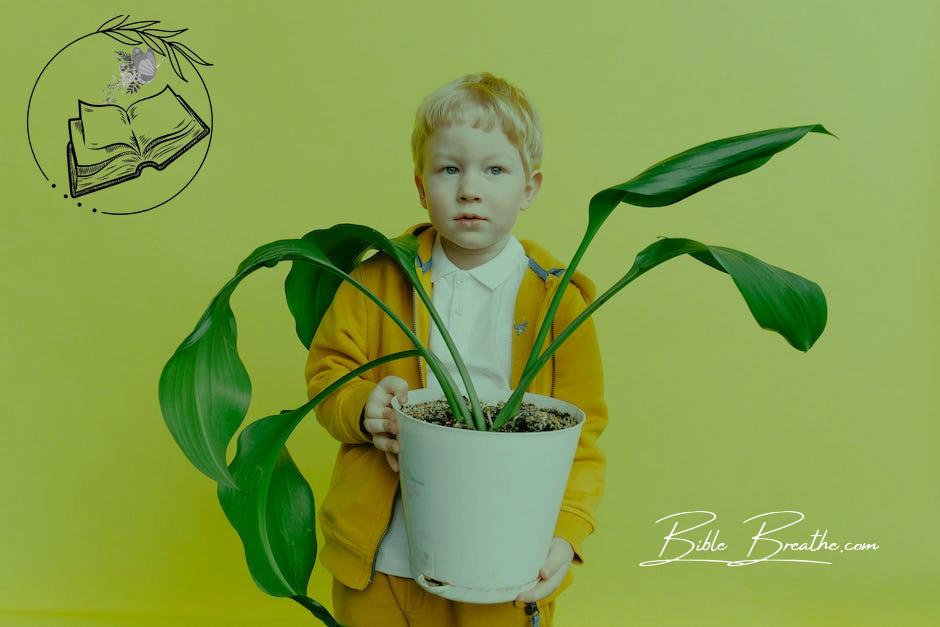Key Takeaways
- How many years has it been since Jesus died? The exact year of Jesus’ death has been a subject of debate among scholars and historians. While it is generally believed to have occurred in the early 30s AD, pinpointing the precise year remains challenging due to limited historical records and varying interpretations of available evidence.
- Regardless of the debate over the exact year, the crucifixion of Jesus holds universal significance for all of humanity. It is a central event in Christian theology, representing the atonement for human sin and the offer of salvation through faith in Jesus Christ.
- Understanding the context and events leading up to Jesus’ death is crucial for appreciating its significance. It was during the Passover in Jerusalem that Jesus was crucified, and His death fulfilled Old Testament prophecies and inaugurated the New Covenant.
- The death of Jesus is a pivotal moment in human history, marking the reconciliation of humanity with God. It calls believers to reflect on the sacrificial love of Christ, His role as the Messiah, and the eternal hope that His death offers to all who believe.
How Many Years Has it Been Since Jesus Died?
Now, that’s like looking back in time, almost as if we’re scrolling through the pages of history on a spiritual tablet.
Picture this: over two thousand years ago, in a land called Nazareth, there was this extraordinary guy named Jesus.
He had a mission that brought Him face-to-face with the likes of Pontius Pilate and the high priest Caiaphas, all set against the backdrop of the powerful Roman Empire.
This ain’t just about numbers; it’s about the ultimate sacrifice, the divine love, and the promise of salvation.
Think of it as a bridge connecting you to your faith roots.
We’re diving deep into the Gospel events, where atonement and theological significance come alive.
So, young hearts and wise souls, let’s unravel this timeless story and discover its significance in our lives.
How many years, you ask?
Get ready for a journey that spans the ages and touches your heart.
Unveiling the Year of Jesus’ Sacrifice

Photo modified by BibleBreathe.com. Original photo by Pixabay on Pexels
Let’s uncover the year when Jesus made the ultimate sacrifice for us.
This event, His crucifixion, stands as the cornerstone of our Christian faith.
But the exact year has been a topic of spirited debate among scholars and believers alike.
The Contention: Was it 30 A.D. or 33 A.D.?
You know, scholars often find themselves at a crossroads, wrestling with whether Jesus laid down His life in 30 A.D. or 33 A.D.
Each side has some compelling arguments, backed by historical and scriptural analysis.
Some lean toward 30 A.D., thinking it aligns with the possibility of a three-year ministry, as recounted in the Gospels.
Meanwhile, 33 A.D. is suggested based on astronomical data and the synchronization of various historical events.
It’s a bit of a mystery, isn’t it?
For God so loved the world, that he gave his only begotten Son, that whosoever believeth in him should not perish, but have everlasting life.” – John 3:16 (KJV)
Seeking Clues in the Gospel Narrative
To unravel this enigma, let’s dive into the Gospels.
We’re on the lookout for chronological clues tucked away in the events surrounding Jesus’ life.
The moments leading up to His crucifixion involve notable figures like Roman governor Pilate, high priest Caiaphas, and the tetrarch Herod Antipas.
These historical breadcrumbs help us pinpoint the date.
Historical Figures and Divine Sacrifice
Now, amidst this historical maze, we encounter figures like Pontius Pilate and Caiaphas, all intertwined with the profound theological significance of atonement.
It’s like a puzzle where Roman rule, Jewish law, and prophetic fulfillment come together to paint a vivid picture of the year in which Christ bore the sins of humanity.
As we delve into this exploration, remember, it’s not just about the year itself; it’s about the incredible love and sacrifice that Jesus demonstrated for each one of us.
His sacrifice and resurrection hold profound meaning in the tapestry of our faith.
Unveiling the Years Since Jesus’ Sacrifice

Photo modified by BibleBreathe.com. Original photo by Pixabay on Pexels
The story of Jesus’ crucifixion and resurrection isn’t just a historical account; it’s the heartbeat of the Christian faith, pulsating with hope and redemption.
Journeying through the Milestones Leading to Jesus’ Crucifixion
To grasp how much time has passed since that pivotal moment, let’s take a walk through the milestones that paved the way for this profound event.
The Year 29 A.D.: A Divine Feast
In 29 A.D., Jesus, the compassionate teacher, performed a divine feast, multiplying a handful of loaves and fish to feed a hungry multitude.
This miraculous act was a testament to his boundless grace and his commitment to provide for those in need.
Transfiguration and the Festival of Tabernacles
During the same year, Jesus experienced a transformative moment during the transfiguration, revealing his divine nature to his disciples.
His presence at the Festival of Tabernacles shone a spiritual light on the world.
30 A.D.: The Final Journey and Lazarus’ Resurrection
In the following year, 30 A.D., Jesus embarked on his last journey to Jerusalem, fully aware of the challenges that lay ahead.
Along this path, he performed one of his most astounding miracles, raising Lazarus from the dead.
This incredible act foreshadowed his own resurrection and showcased his authority over death.
The Climactic Crucifixion and Resurrection
In that same year, the climax of Jesus’ earthly mission unfolded as he was crucified and, astonishingly, rose from the dead.
His crucifixion was a solemn moment symbolizing atonement and divine love, providing a pathway to salvation for all who believe.
As we reflect on these milestones, it’s been approximately 1,993 to 1,994 years since the crucifixion and resurrection of Jesus Christ.
Yet, their spiritual impact continues to reverberate deeply in the hearts of believers.
“For God so loved the world, that he gave his only begotten Son, that whosoever believeth in him should not perish, but have everlasting life.” – John 3:16 (KJV)
Understanding the Years Since Jesus’ Crucifixion

Photo modified by BibleBreathe.com. Original photo by Alem Sánchez on Pexels
Let’s dive into the depths of history to uncover how many years have passed since the crucifixion of our Lord and Savior, Jesus Christ.
Unveiling the Rulers in the Age of Jesus
To make sense of this timeline, we need to cast our gaze back to the days when Jesus walked this earth, and notable leaders held sway.
The Rule of Roman Governor Pilate
Back in the early 30s A.D., Judea was under the rule of Pontius Pilate, a Roman governor.
His time in office witnessed some significant events, none more significant than the trial and crucifixion of Jesus Christ.
These events, etched into the Bible, form the bedrock of our knowledge about when Jesus faced the cross.
The High Priest Caiaphas
Caiaphas, the Jewish high priest, was quite the influencer during that same era.
His role in the events leading to Jesus’ trial and condemnation is pivotal to understanding the timeline of Jesus’ crucifixion.
He played a significant part, providing additional historical context to pinpoint this transformative moment.
Tetrarch Herod Antipas
Another key player in this historical drama was Herod Antipas, the Roman Tetrarch of Galilee.
His political power and interactions with Jesus during the trial and crucifixion are pieces of the puzzle we need to consider.
Understanding Herod Antipas’s reign helps establish the historical framework for dating Jesus’ crucifixion.
Taking into account these rulers and their roles during Jesus’ time, we estimate that approximately 1,993 to 1,994 years have passed since the crucifixion and resurrection of Jesus Christ.
This dating is grounded in historical accounts, biblical records, and the reigns of these prominent figures who played a part in these monumental events.
But he was wounded for our transgressions, he was bruised for our iniquities: the chastisement of our peace was upon him; and with his stripes, we are healed.” – Isaiah 53:5 (KJV)
Reflecting on the Timeless Atonement
While historians may debate the exact year of Jesus’ crucifixion, let’s dive deeper into the heart of the matter – the profound theological implications of this pivotal event.
The Divine Sacrifice and Atonement
Theologians and believers alike share a profound understanding of the theological significance woven into Jesus’ death and resurrection.
The crucifixion stands as the ultimate atonement, where the weight of humanity’s sins was borne by the sinless Savior, paving the path to salvation.
“And he is the propitiation for our sins: and not for ours only, but also for the sins of the whole world.” – 1 John 2:2 (KJV)
Beyond the Contention of Years
Whether it was 30 A.D. or 33 A.D., the exact year of Jesus’ death pales in comparison to the greater message of divine love and redemption.
The essence of Christianity isn’t tethered to a specific date; it’s anchored in the eternal truth that through Christ’s sacrifice, humanity finds reconciliation with God.
Uniting Faith and Understanding
In the intricate tapestry of faith, the threads of Roman governance, the roles of religious leaders like Caiaphas, and the choices of individuals like Pontius Pilate all converge to fulfill a divine plan.
This convergence is a testament to the beauty of divine choreography, showcasing God’s sovereignty over the course of human history.
The Passage of Time Since Jesus’ Crucifixion

Photo modified by BibleBreathe.com. Original photo by Rakicevic Nenad on Pexels
Let’s take a journey through history and the Bible to understand just how many years have passed since the crucifixion of our Lord and Savior, Jesus Christ.
Pondering the Years: 1,993 to 1,994 and Beyond
Scholars, both from the academic and biblical realms, generally agree that Jesus’ crucifixion took place somewhere between 30 A.D. and 33 A.D.
This conclusion is drawn from careful historical and biblical research.
So, if we look at the calendar today, it’s been roughly around 1,993 to 1,994 years since that momentous event unfolded.
Reaching the 2,000-Year Mark: A Profound Milestone
Now, folks, we’re approaching a remarkable milestone – the 2,000-year mark since Jesus’ crucifixion.
This isn’t just any milestone; it’s a monumental one for Christians all over the world.
It’s a reminder of the enduring impact of Jesus’ sacrifice, His teachings, and His resurrection on the entire human race.
It’s like a beacon of eternal truth shining through time.
As we stand on the brink of this significant moment, it encourages us to reflect on the transformative power of Jesus’ life and the timeless relevance of His message in our ever-changing world.
“And this is life eternal, that they might know thee the only true God, and Jesus Christ, whom thou hast sent.” – John 17:3 (KJV)
The Crucifixion and Its Universal Impact

Photo modified by BibleBreathe.com. Original photo by Anna Shvets on Pexels
As we ponder the crucifixion of Jesus Christ, we come face to face with a profound responsibility that spans across ages and cultures.
A Tapestry of Roles in Crucifixion
The journey to Jesus’ crucifixion was like a complex play with various characters and circumstances.
The Jewish leaders, represented by figures like Caiaphas, were entangled in their fear of Jesus’ influence.
Pilate, the Roman governor, faced a moral crossroads, and ordinary folks, just like us, were part of the demand for Jesus’ crucifixion.
“For all have sinned, and come short of the glory of God.”” – Romans 3:23 (KJV)
A Universal Message of Atonement
However, going beyond the details of those involved, the crucifixion carries universal significance.
It wasn’t just a historical event limited to a specific time or group; it was God’s grand plan for the redemption of all humanity.
It was an act of divine love, the ultimate sacrifice that opened the door to salvation and atonement for every soul.
The Depths of Divine Love
In this intricate mosaic of responsibility, we witness the depth of God’s love, His earnest desire for the salvation and enlightenment of all.
The events at Calvary resonate through the corridors of time, speaking to every heart, regardless of culture, era, or individual actions.
The crucifixion, a foundational pillar of Christian faith, calls upon us to embrace this universal message of love, forgiveness, and redemption.
Illuminating Jesus’ Death through Sacred Scriptures

Photo modified by BibleBreathe.com. Original photo by Alem Sánchez on Pexels
Let’s shine a light on the profound impact and significance of Jesus’ death by diving into the sacred verses of the Bible.
Unveiling the Scriptures: A Window into Eternity
The Bible, you see, is a treasure trove of divine wisdom, and it holds the key to understanding the depth and purpose of Jesus’ sacrifice.
1. John 3:16 (KJV)
This verse right here, it’s like a spiritual compass.
It encapsulates the very heart of Jesus’ sacrifice, emphasizing God’s deep love for us and the gift of eternal life that comes through believing in Jesus.
2. Romans 5:8 (KJV)
Now, the apostle Paul, he had a way with words.
In this passage, he shines a spotlight on the divine love displayed in Jesus’ death.
It’s a reminder that Christ’s sacrifice was for sinners like you and me.
3. 1 Peter 2:24 (KJV)
Peter’s epistle, it’s like a healing balm for our souls.
It explains how Jesus carried our sins in His body on that cross, bringing us healing and restoration through His suffering.
4. Hebrews 9:28 (KJV)
The author of Hebrews, they want us to know that Christ’s death wasn’t the end; it was the beginning of salvation and redemption.
It’s like a preview of His triumphant return.
Now, as we reflect on these timeless verses, we find that it’s been approximately 1,993 to 1,994 years since Jesus’ crucifixion.
And you know what?
These words from the Bible, they’ve only grown in their eternal significance over time.
“But God commendeth his love toward us, in that, while we were yet sinners, Christ died for us.” – Romans 5:8 (KJV)
Frequently Asked Questions (FAQs) About How Many Years Has It Been Since Jesus Died
Why do some scholars believe Jesus died in 30 A.D. while others in 33 A.D.?
The difference in dates is due to historical debates and calendar discrepancies.
Some scholars calculate Jesus’ crucifixion around 30 A.D.
based on historical and astronomical data, while others use different methods, resulting in the date of 33 A.D.
Is any doctrine dependent on the exact year Jesus died?
Christian doctrine doesn’t hinge on the exact year of Jesus’ death.
The significance lies in His sacrificial death and resurrection, not the precise year.
While scholars estimate the year, the core of Christianity revolves around Jesus’ atonement for sin and His teachings.
Who were the key rulers when Jesus died?
During Jesus’ crucifixion, key rulers included Roman authorities like Pontius Pilate and King Herod Antipas, alongside high priests like Caiaphas.
These individuals played significant roles in the events leading to Jesus’ death, according to the Gospels, representing both Roman and Jewish authorities of that time.
Matt Turner
I’m Matt, and I love breaking down Bible verses in a way that’s easy to understand and apply to everyday life. My goal is to help you connect with God’s Word and find practical ways to live it out. Whether you’re new to the Bible or just looking for some fresh insights, I’m here to walk with you and share what I’ve learned along the way.

